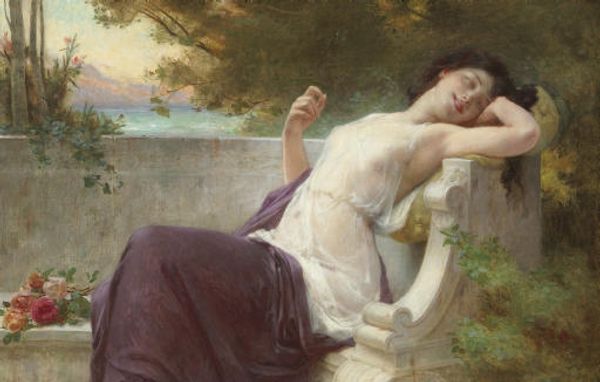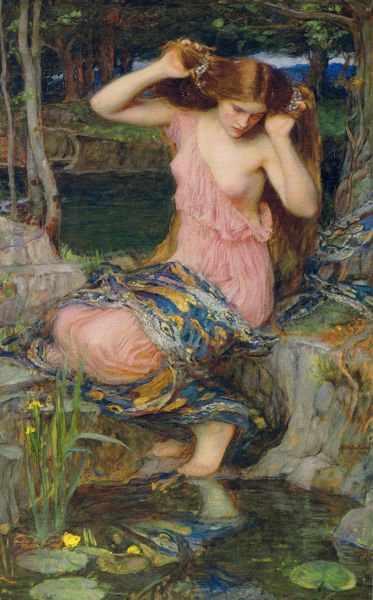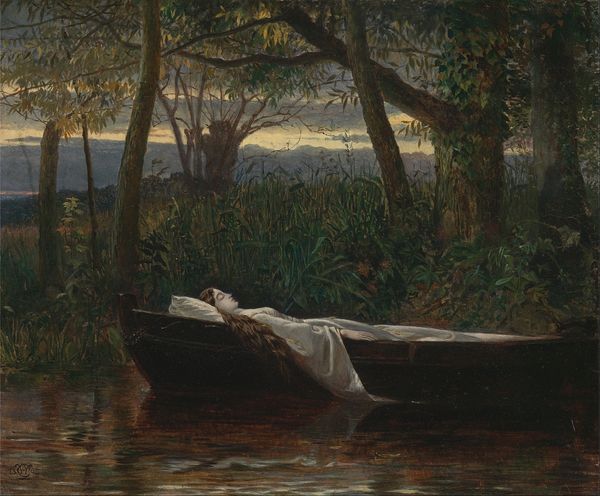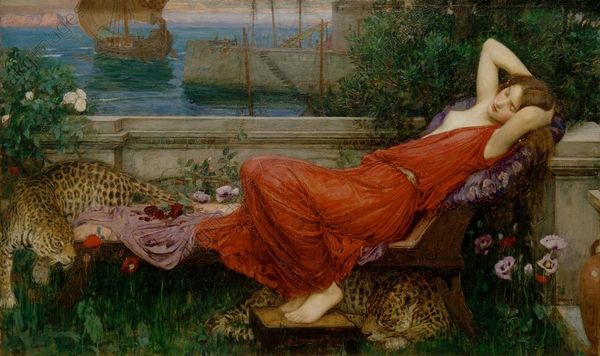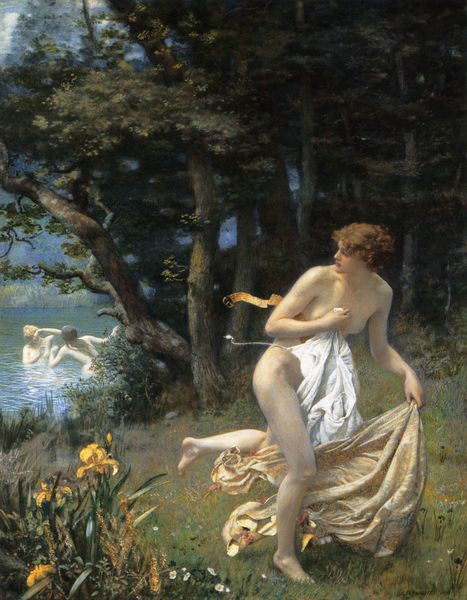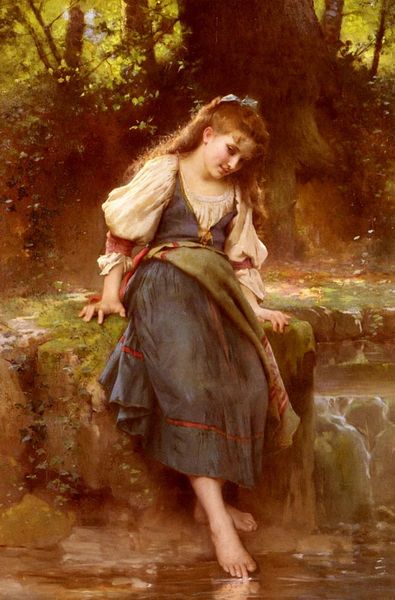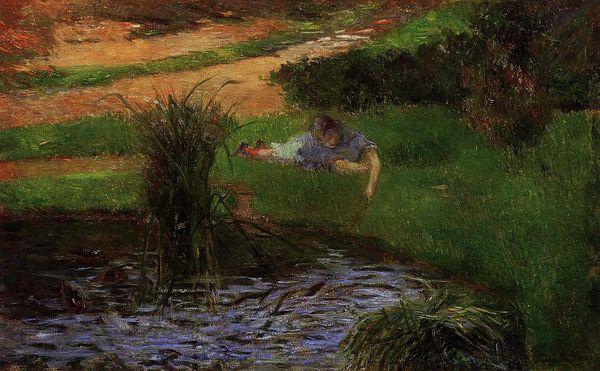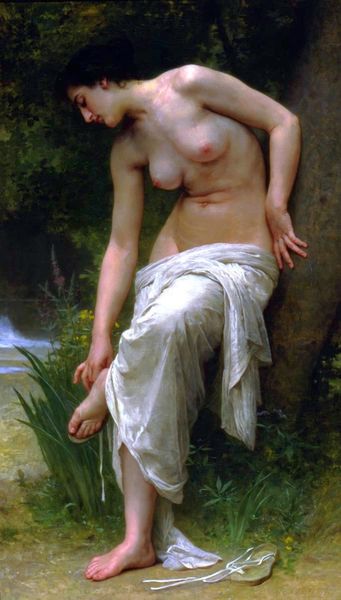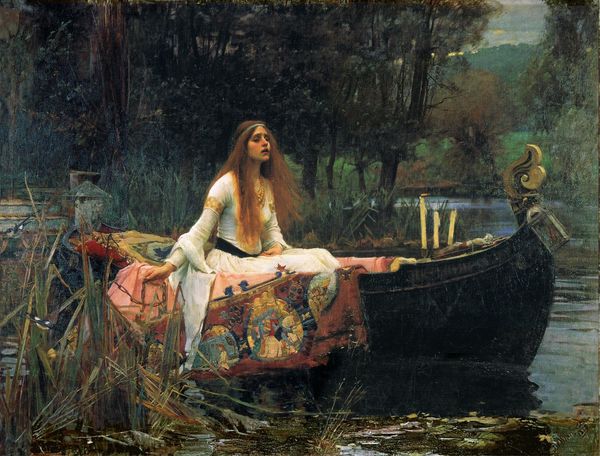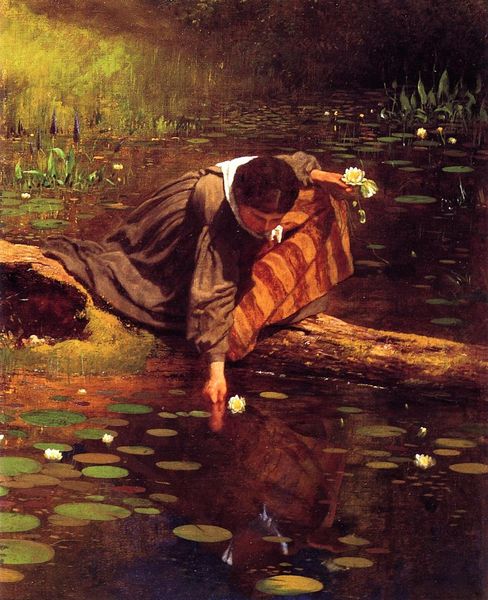
Dimensions: 60 x 73.4 cm
Copyright: Public domain
Curator: This is Berthe Morisot’s "Study, The Water's Edge," created around 1864. Painted with oils, it showcases a figure lounging near water. There is something compelling about her studio practice as a woman using *plein air* method in a patriarchal world. Editor: There's a languid, almost mournful quality. She seems lost in thought, her reflection blurred in the water like a half-formed memory. I can almost feel the cool dampness of the earth. It's funny, Morisot painted it, but I think I see myself in that pose right now. Curator: Interesting that you say so. Viewing the picture as a "half formed memory", one cannot fail to read the artist´s intention. Given Morisot's status as a woman artist during this era, access to models would have been heavily policed by men. Her decision to include a nude element could have been driven as much by constraints of social context and studio access as by artistic choice. Editor: True, the limitations imposed on her probably did shape the art. The landscape becomes another actor, with both concealing and revealing function. Notice those tall blades of grass; a world of potential right beneath her nose. But does she have agency or even motivation to get out of there? I don't know. She looks stuck. Curator: Agency, right, and in a materialist way, that could be explored by noticing the facture of this oil sketch! Looking closely, the layers of pigment tell a story of construction: of the interaction with weather, light, and the ground. It reveals decisions about production conditions of her artistic labour, a way to fight back against gendered exploitation. Editor: Okay, sure, but to me, it's more intimate than all that! I mean, think about lying on your stomach on the ground like that, how raw, physical and exposed! I reckon I understand what it must feel like to paint, or think, like a woman in that exact position; trapped but secretly hopeful, maybe? It's powerful stuff. Curator: I find myself captivated, once again, by Morisot's remarkable command of depicting and reflecting labor exploitation and, from this point of view, I think the oil becomes another important material used to express these feelings. Editor: Yes, a kind of translation of inner turbulence into external beauty. It is more than what they permit us to see and also it is full of silent screaming and suffering. It makes it even more beautiful!
Comments
No comments
Be the first to comment and join the conversation on the ultimate creative platform.

